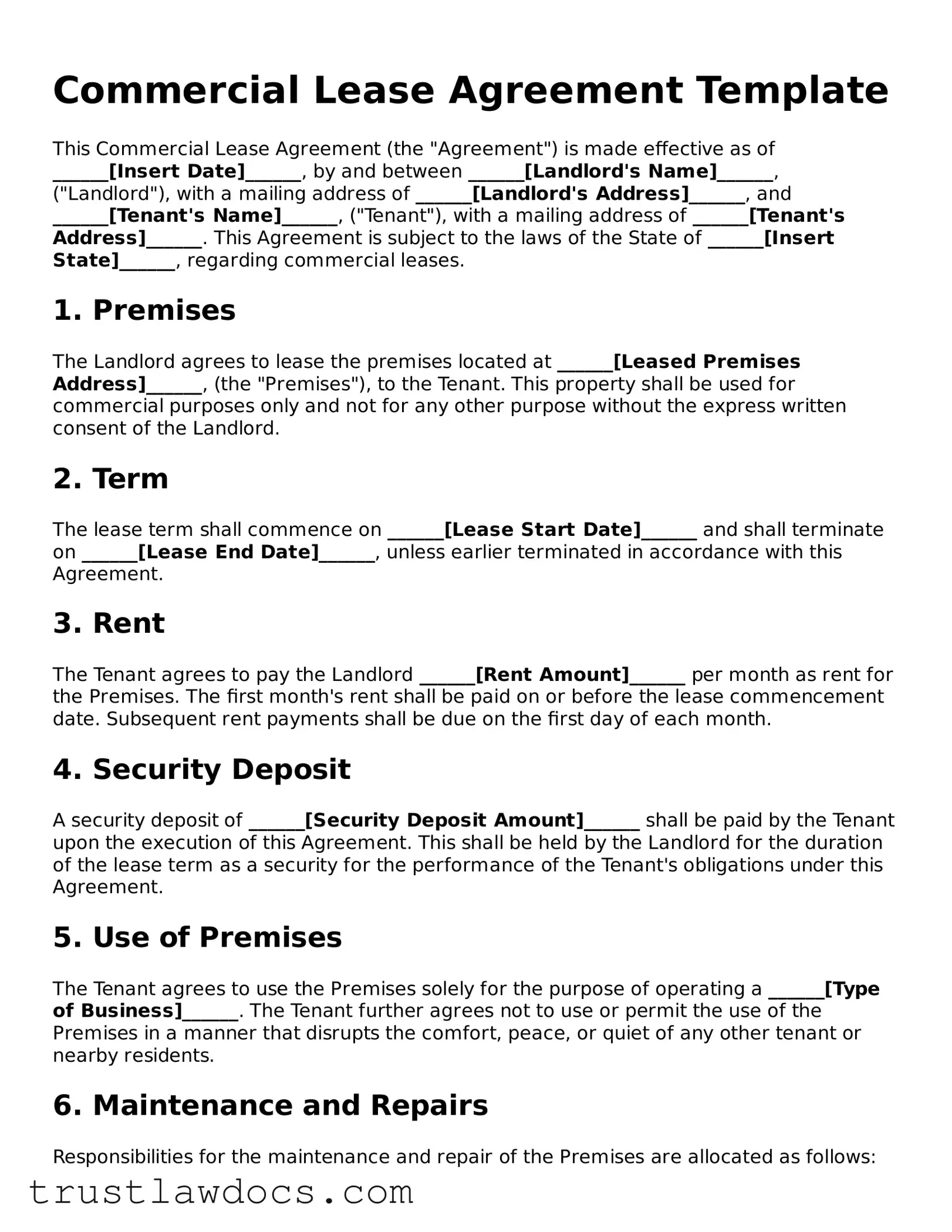Commercial Lease Agreement Template
This Commercial Lease Agreement (the "Agreement") is made effective as of ______[Insert Date]______, by and between ______[Landlord's Name]______, ("Landlord"), with a mailing address of ______[Landlord's Address]______, and ______[Tenant's Name]______, ("Tenant"), with a mailing address of ______[Tenant's Address]______. This Agreement is subject to the laws of the State of ______[Insert State]______, regarding commercial leases.
1. Premises
The Landlord agrees to lease the premises located at ______[Leased Premises Address]______, (the "Premises"), to the Tenant. This property shall be used for commercial purposes only and not for any other purpose without the express written consent of the Landlord.
2. Term
The lease term shall commence on ______[Lease Start Date]______ and shall terminate on ______[Lease End Date]______, unless earlier terminated in accordance with this Agreement.
3. Rent
The Tenant agrees to pay the Landlord ______[Rent Amount]______ per month as rent for the Premises. The first month's rent shall be paid on or before the lease commencement date. Subsequent rent payments shall be due on the first day of each month.
4. Security Deposit
A security deposit of ______[Security Deposit Amount]______ shall be paid by the Tenant upon the execution of this Agreement. This shall be held by the Landlord for the duration of the lease term as a security for the performance of the Tenant's obligations under this Agreement.
5. Use of Premises
The Tenant agrees to use the Premises solely for the purpose of operating a ______[Type of Business]______. The Tenant further agrees not to use or permit the use of the Premises in a manner that disrupts the comfort, peace, or quiet of any other tenant or nearby residents.
6. Maintenance and Repairs
Responsibilities for the maintenance and repair of the Premises are allocated as follows:
- The Landlord is responsible for repairs to the structure of the building, including but not limited to the roof, exterior walls, and foundation.
- The Tenant is responsible for the day-to-day maintenance and repairs of the Premises, including keeping the interior of the Premises clean and in good repair.
7. Alterations
Any alterations, additions, or improvements to the Premises by the Tenant must receive the prior written consent of the Landlord. Upon the termination of this lease, the Tenant shall remove such alterations, additions, or improvements, unless the Landlord requests in writing that they remain in place.
8. Termination
This Lease may be terminated before the end of the term under the following conditions:
- By mutual agreement of both parties in writing.
- If one party breaches any term of this Agreement and fails to correct the breach within a reasonable period following written notice from the other party.
9. Governing Law
This Agreement shall be governed by and construed in accordance with the laws of the State of ______[Applicable State]______.
10. Signatures
IN WITNESS WHEREOF, the parties have executed this Commercial Lease Agreement as of the date first above written.
Landlord: ___________________________________ Date: ______
Tenant: _____________________________________ Date: ______
